Buildings
- Nathan Augustine
- Jul 25, 2020
- 6 min read
Updated: Jun 6, 2024
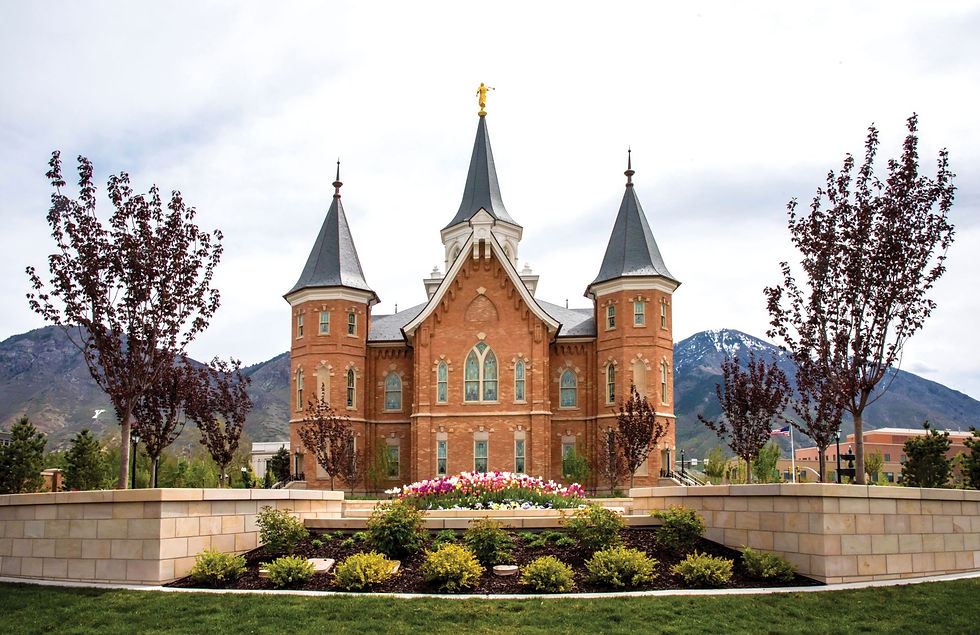
Provo City Center Temple
The buildings that are temples are known for their beauty and impressive architecture. Most of the time the history of these buildings is pretty straightforward. They were built as temples and have served that function ever since. However in this post I will discuss some temple buildings that have had a more complex history.
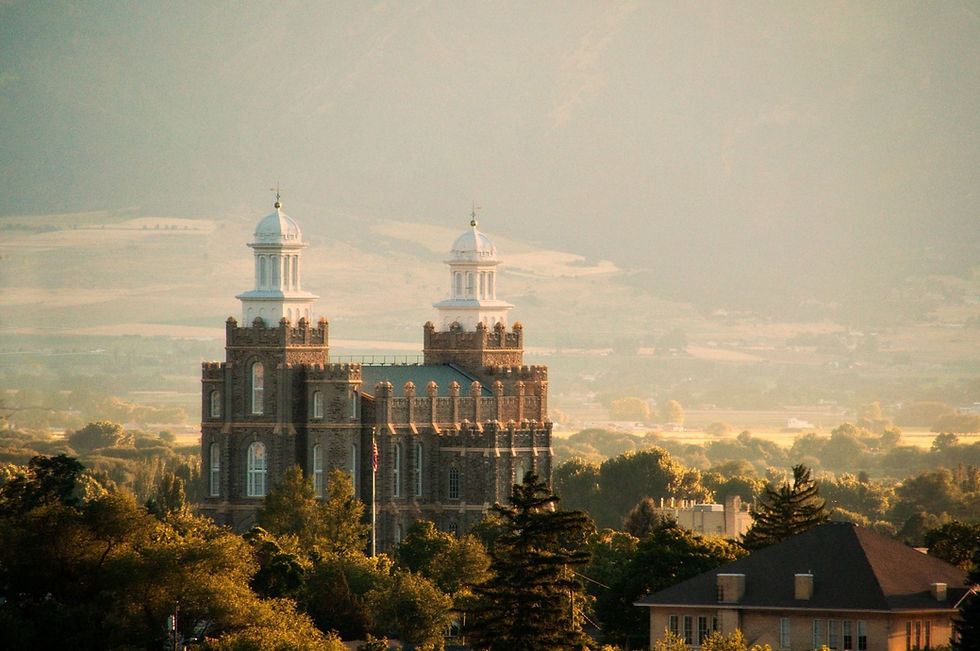
Logan Utah Temple
The history of the Logan Utah Temple is perhaps the most unusual. In the 1960's the Church needed to relieve overcrowding in the three northern Utah temples (Logan Utah, Salt Lake and Manti Utah) (Provo Utah Temple: Four Decades of Service), where waiting times were often longer than endowment sessions (David O. McKay and the Rise of Modern Mormonism, p. 268). Each of these pioneer era temples had endowment sessions with four stage progression and live actors (See my previous posts on Progression and Live or Video). The Church built two temples, the Ogden Utah and Provo Utah temples to relieve the overcrowding and they built them to present the much more efficient single room video endowment. These two temples were able to present significantly more endowments than the older Utah temples (Provo Utah Temple: Four Decades of Service). However the Logan Utah Temple was still especially crowded (Lengthen Your Stride: The Presidency of Spencer W. Kimball, p. 22). A significant problem with this temple was the fact that to move from one endowment room to the next required patrons to climb a flight of stairs between each room. Since many of the patrons were older they often had difficulty climbing the stairs and would slow down the entire group (Photogent: The Sad Tale of the Logan Utah Temple). The Church asked architect Emil Fetzer to come up with a solution. After much study and prayer he proposed something radical, which was to demolish the temple except for the exterior walls and then rebuild it. In other words to put a 1970's style temple inside the pioneer era walls. Seeing no alternative the Church did so and rededicated it in 1979 (Lengthen Your Stride: The Presidency of Spencer W. Kimball, p. 23). After the renovation the temple could accommodate 75% more patrons than previously (Church News: Tours begin in Logan Temple)

Hamilton New Zealand Temple
The first six temples of the restoration (Kirtland, Nauvoo, St. George Utah, Logan Utah, Manti Utah and Salt Lake) were built through the volunteer labor of local Church members. All the other temples were built by professional contractors except for the Hamilton New Zealand Temple, whose construction story is unique (New Zealand Labour Missionaries Share Experiences, Look to the Future and Mormon temple opens in Hamilton, Instruments in God’s Hands) and Building For Eternity).
Because of the lingering after-effects of World War II there was a shortage of skilled laborers and infrastructure in New Zealand and the South Pacific. To address these issues the Church called service missionaries who had construction expertise from the United States, mostly from Utah to serve in New Zealand and train and supervise local labor missionaries and a some paid contractors for several construction projects including the temple (Instruments in God’s Hands).
Some of the labor missionaries were as young as 14 (New Zealand Labour Missionaries Share Experiences, Look to the Future).
Because the missionaries received valuable training in construction and other trades a number of non-members volunteered to serve as well (Mormon Maoris build their way to Education).
The Church had its own saw mill and quarry for materials (Mormon Maoris build their way to Education).
The Church began the service missionary program so they could construct a Church College in New Zealand five years before they announced that they would build a temple on the same site. They continued the program for several years after the temple was finished to provide bricks and materials for church meeting houses and other buildings around New Zealand and the Pacific (Mormon Maoris build their way to Education).
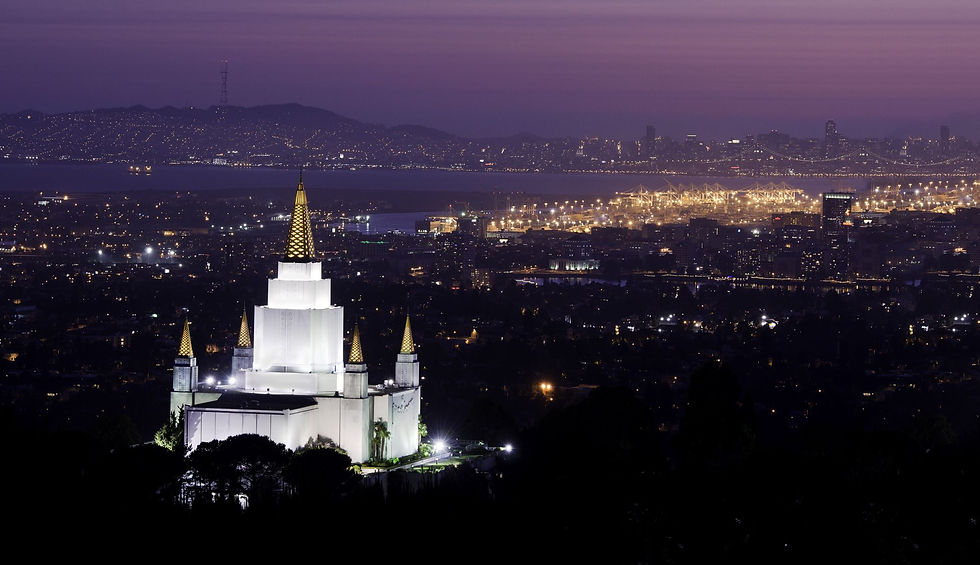
Oakland California Temple
There are many stories circulated throughout the Church that tell of a brightly lit and architecturally prominent temple being used as a navigation aid for either ships or airplanes or both. Often the story includes the lights on the temple being turned off to save energy or because of a power failure and the local port authority or air traffic controller calling the temple to request that the lights be turned back on. The gospel analogy is obvious and hard to resist retelling (and hard to resist embellishing). However, like most widely circulated stories the details vary and proof is difficult to find. I have most often heard that the Oakland California Temple is a navigational landmark. In this case there is proof. The temple appears on the FAA's San Francisco Terminal Area Chart as "VPMOR". And small planes regularly use it when flying into or out of the Bay Area. For example as described in these blog posts (Instrument checkride, Long solo cross-country, 4 July and Talking with Oakland Tower) Some other temples appear to also occasionally be used in a similar way, though Oakland seems to be the most commonly used.

Nauvoo Illinois Temple
Between 1848 and 1856 fire and a tornado completely destroyed the original Nauvoo Temple. The Church built a new temple the same size and exterior appearance on the site and dedicated it in 2002 (President Hinckley and the Nauvoo Temple and Nauvoo Temple Timeline).

Apia Samoa Temple before rebuilding
A fire destroyed most of the Apia Samoa Temple in 2003. Other temples have had fires or other damage but in each case they were quickly repaired. This is the only time an operating temple has been destroyed and only the second time, after Nauvoo, that any latter-day temple has been destroyed. The Church rebuilt it with significant changes and re-dedicated it in 2005 (Apia Samoa Temple).
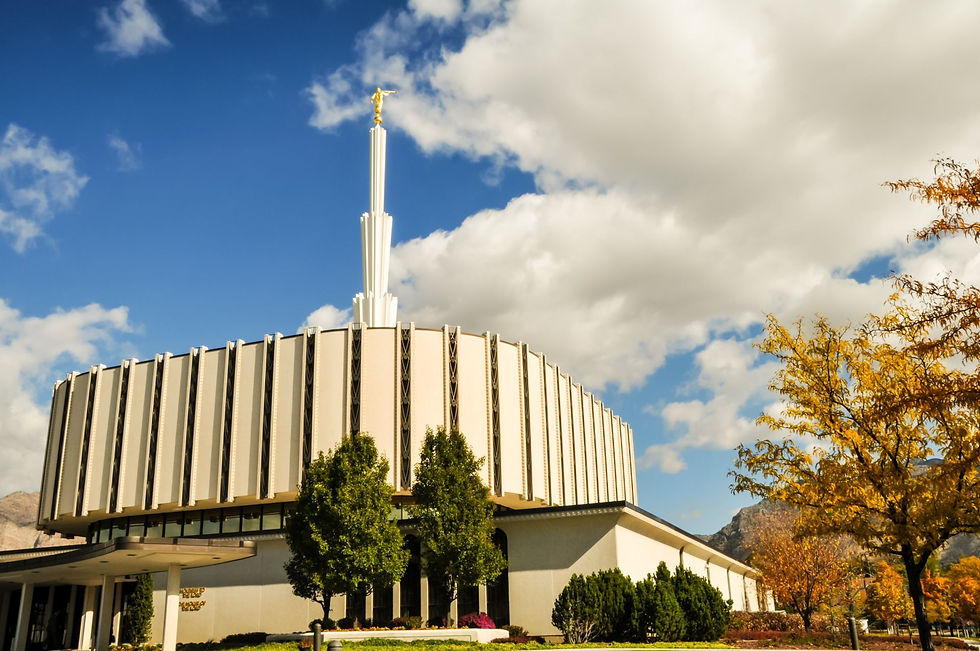
Ogden Utah Temple before rebuilding
In 2010 the Church rebuilt the exterior of the Ogden Utah Temple making the building slightly smaller but otherwise keeping the interior mostly the same. They re-dedicated it in 2014 (Ogden Utah Temple).
They plan to do a very similar rebuild of the Provo Utah Temple, which is a twin of Ogden (The Exterior Renderings for the Redesigned Provo Utah Temple and the Smithfield Utah Temple).
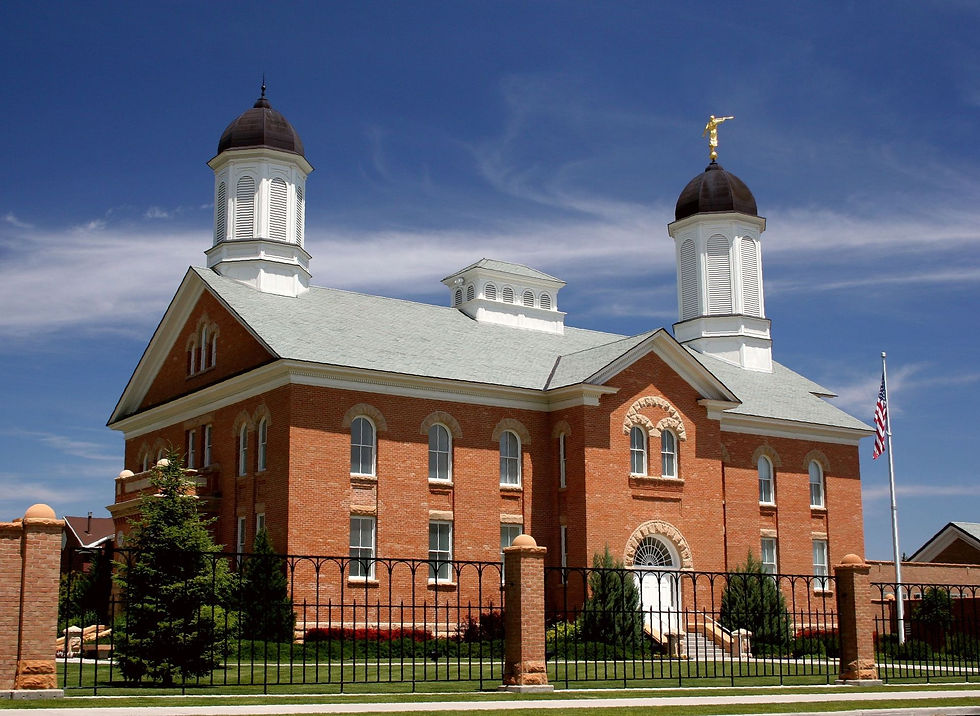
Vernal Utah Temple
The Vernal Utah Temple was the first temple the Church converted from an existing building (the Uintah Stake Tabernacle) (Vernal Utah Temple and Utah Preservation Volume 2 pg. 13-20). Since then the Church has converted the Copenhagen Denmark Temple from the Priorvej chapel (Small and Simple Things: Copenhagen Denmark Temple), the Manhattan New York Temple from the New York New York Stake Center / Public Affairs building (Open House and Dedication Announced for Manhattan New York Temple) and the Provo City Center Temple from the burnt out remains of the Provo Tabernacle (150th Temple is Dedicated and Provo City Center Temple Construction Time-Lapse video).

Fukuoka Japan Temple
Because of the high cost of real estate in their locations the Hong Kong China (before renovation) (How The Hong Kong Temple Came to be), Fukuoka Japan (Fukuoka Japan Temple: Facts and figures) and Manhattan New York (Manhattan Temple) temples are part of larger “multi-use” Church buildings where the temple is only part of the whole building. Since its renovation the Hong Kong China Temple building is exclusively a temple; the Church has moved the other functions to a new building across the street (Church Releases Details of Hong Kong China Temple Renovation).
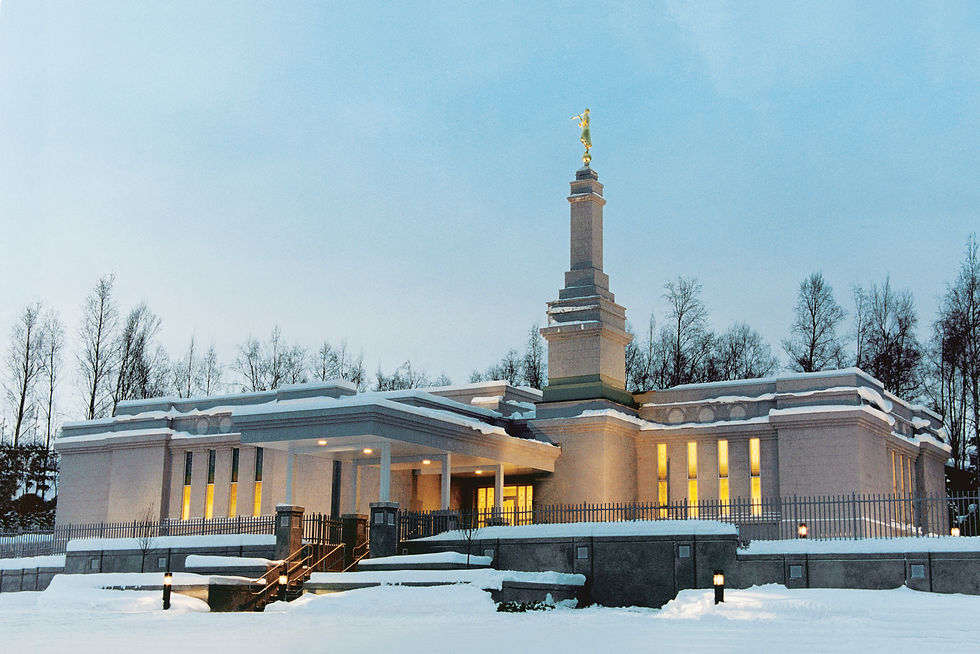
Anchorage Alaska Temple
The Church has announced plans to build a new temple in Anchorage Alaska to replace the existing temple there and to then decommission and demolish the existing temple (Anchorage Alaska Temple to Be Reconstructed). This will be the first time the Church intentionally decommissions and demolishes an existing temple building.
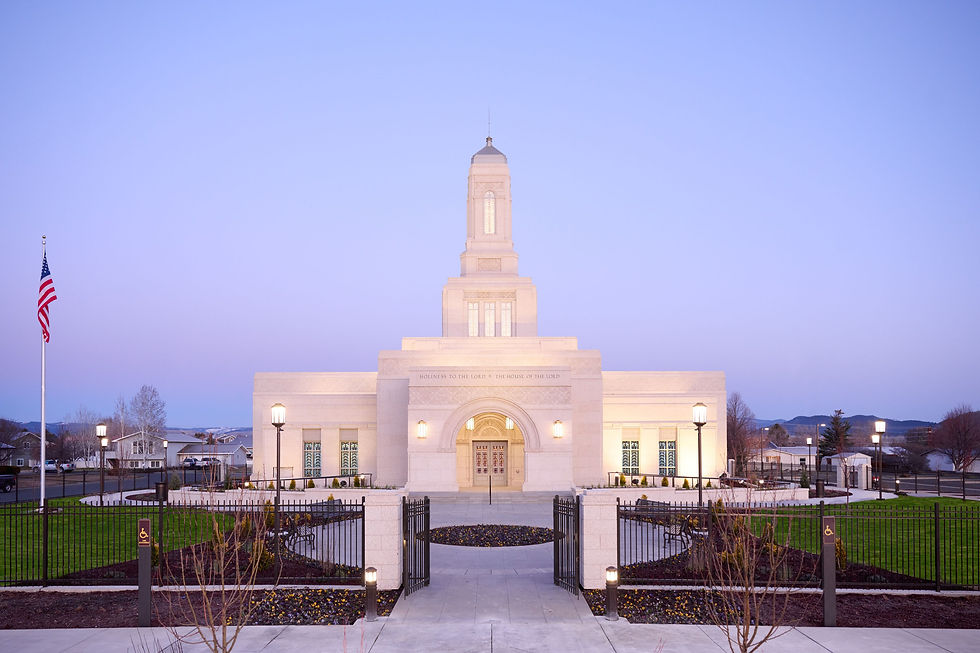
Helena Montana Temple
The Church tested a new and innovative modular construction process when they built the Helena Montana Temple. The Church hopes this will allow temples to be built much more quickly than previously. BLOX, a company in Bessemer, Alabama built 25 separate modules in their factory and then shipped each module to the temple site in Helena for final assembly. BLOX successfully met the Church's requirements for the quality and craftsmanship necessary to build a house of the Lord. (How the House of the Lord in Helena Was Built Differently)
Comments